Adductor Muscle Pain
What is Adductor Muscles Pain?
The adductor muscle comprises of the adductor longus, adductor brevis and adductor mangnus. As the name suggests, the chief function of this group of muscles includes the adduction of the hip joint.
Sometimes, due to some pathologies, adductor muscles can start to cause discomfort. This is usually felt as pain in the lower abdomen or the groin area, near the pelvis. To be precise, the pain is felt along the origin and insertion of the adductor muscles and their tendons.
There are a variety of reasons why adductor pain is felt. Most common of them include the strain of adductor muscles, followed by tendinitis or tendinopathy, and less frequently by Adductor Canal Syndrome.
All of them and a few uncommon ones, along with the treatment and physiotherapy management are explained further down in this article. Before moving on to that, first, let us see the overview of the adductor muscles.
Overview of the Adductor Muscle
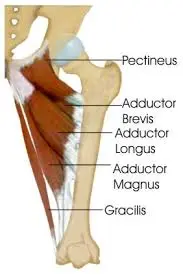
The adductor complex comprises the three adductor muscles namely – Longus, Magnus, and Brevis. Out of all of these, the adductor longus is frequently injured. All of them belong to the medial compartment of the thigh.
Let us take a look into all three muscles in detail.
Adductor Longus
- Is a large flat muscle
- Partially covers the rest of the adductor muscles
- Makes the medial border of the femoral triangle
- Origin – Pubic body, just below the pubic crest
- Insertion – Expands into a fan and attaches to the middle third of line aspera of the femur.
- Blood Supply – Deep femoral artery
- Nerve Supply – Anterior division of Obturator nerve with the nerve root L2 – L4
- Functions
- a. Adduction of the hip joint
- b. To a few extend external rotation and flexion of the hip.
- c. Stabilizes pelvic while walking
- d. Helps in balancing the lower extremities
Adductor Brevis
- Is a small muscle underneath the adductor longus
- Is a very important anatomically landmark as the adductor brevis lies in between the anterior and posterior divisions of the obturator nerve.
- Origin – From the body of the pubis and anterior surface of the inferior pubic rami
- Insertion – Proximal to the adductor longus at the posterior surface of the femur on the linea aspera and the lesser trochanter of the femur.
- Blood Supply – Primarily from the deep femoral artery. Alongside the obturator artery and medial circumflex artery.
- Nerve Supply – Obturator nerve with the nerve root L2 – L4
- Functions
- a. Adduction of the hip
- b. Hip flexion to a certain degree
- c. Medial or lateral rotator of the hips depending upon the movement.
Adductor Magnus
- The largest muscle in the adductor complex as well as the medial compartment of the thigh.
- The muscle is so big that it has been divided into two parts – the adductor part and the hamstring part.
- Origin – The adductor part arises from the proximal surface of the inferior rami of the pubis and the rami of the ischium. Whereas the hamstring part arises from the proximal surface of the ischial tuberosity.
- Insertion – The adductor part is inserted in the proximal surface of the femur at the middle of linea aspera and medial supracondylar line. Whereas the hamstring part is attached at the medial condyle, precisely the adductor tubercle, and the medial supracondylar line of the femur.
- Blood Supply – The upper portion is supplied by the medial circumflex femoral artery and the femoral artery, whereas the lower portions are supplied by the obturator artery and the direct and perforating branches of the deep femoral artery.
- Nerve Supply – The adductor part is innervated by the Obturator nerve, L2 – L4, and the hamstring part is supplied by the tibial component of the sciatic nerve, L4-S3.
- Functions
- a. Chief adductors of the thigh
- b. Aids in the medial rotation of the hip joint
- c. The anterior fibers from the pubis rami and ischium play a role in hip flexion and internal rotation.
- d. The posterior fibers from the ischial tuberosity play a role in hip extension. When the hip is flexed and the person extends it, the adductor longus is the chief hip extensor in this moment rather than the hamstring or gluteus Maximums.
- e. Its role is similar to that of the deltoid in the upper limb where it acts as a dynamic stabilizer for the ball and socket joint of the hip joint and the pelvis.
Common Causes of Adductor Pain
There are a lot of things that can cause adductor pain. A few of them include,
Adductor Magnus strain
- They are most common among athletes.
- Especially among the ones in high contact sports which involve a lot of repetitive turning moments of the torso and hip like twisting, running, kicking, etc.
- This includes games such as football, baseball, cricket, hockey, rugby, ice hockey, kabaddi, etc.
- Etiologically, men are more prone to this type of injury than female, with the man accounting for 5-20% and females, for 2-15%.
- The exact course or mechanism which leads to Adductor Magnus strain is not known, as most of the time, the pain is ignored or is misunderstood in the form of groin pain.
- What is known is that a variety of causes lead to Adductor Magnus pain. And chronic pain might lead to tendinopathy of adductor tendons.
- There are two main differences between strain and tendinosis.
- First of all, strain is an acute condition that can be very painful and require immediate attention. Tendinosis is a chronic condition that usually happens due to repetitive strains or ignored strains.
- The second one is, that the pain of strain is more on the localized side at the musculotendinous junction whereas that of tendinosis is more of vague pain on the insertion side of the tendons, usually at pubic bones.
- The pain of the Adductor Magnus is felt as intense pain in the groin area.
- This usually happens due to excessive muscle stretch due to any causes, natural or violent or accidental.
- Typically, the adductor muscle strain appears as a pain in the inner thigh, which increases in intensity while trying to bring the legs closer.
Adductor Brevis Strain
- This, very much like Adductor Magnus strain, is an injury of sports people, especially those with the high contact sports
- Most commonly, hockey and football players do come with complaints of adductor brevis pain, as these sports require the muscle to stay in prolonged periods of eccentric contraction, thereby increasing the chance of injury.
- The most common symptoms of the adductor brevis strain include – pain in the inner thigh, followed by swelling and a feeling of reduced strength in the thigh.
Adductor Tendinopathy
- It is most commonly regarded as groin pain.
- Are very common among professional sports players, especially among men than women.
- It is very difficult to pinpoint the exact reason for the groin pain due to the involvement of a mixture of structures like the hip joint, pelvis bone, sacral bone, hip adductors, gluteal muscles, etc.
- Sports players, who have involved either repetitive movements of hip adductors or spontaneous changes in direction of the muscle, are most commonly affected.
- These include – sprinters, swimmers, football players, soccer players, hockey players, cricketers, gymnasts, dancers, etc.
- One of the prominent causes of adductor tendinopathy is repetitive movements that irritate the adductor tendons.
- Other reasons which might irritate the adductor tendon include overstretching of the muscle, sudden loading of the muscle, overuse of the muscle, improper warming up or cooling down, etc.
- People with limb length discrepancy are also often affected with adductor tendinopathy, followed by people with a waddling gait, limping gait, or ones with different adductor strength in both lower limbs.
- At first, the symptoms of tendinopathy are often ignored as they are relieved immediately with heat packs or hot showers, followed by fast movements such as brisk walking.
- And also, more often than not, the pain is only felt during the exercise of a particular movement in the initial stages.
- As the tendinopathy progress, the symptoms become more and more persistent causing functional limitation and hindrance in activity participation.
- Common symptoms of adductor tendinopathy include pain in the upper inner thigh, just below or around the groin area, followed by stiffness and a tautness of the tendon on palpation.
- In further stages, this is coupled with limitation in the hip joint range of motion, inflammation over the adductor tendon, and weakness of the upper thigh.
Adductor Canal Syndrome
- Adductor canal syndrome or otherwise called the adductor canal compression syndrome is a very infrequent cause of adductor pain.
- It is a non-atherosclerotic cause of arterial occlusion & limb ischemia.
- In this, the superficial femoral artery is compressed while coursing through the adductor canal.
- This causes occlusion in the blood flow to the thigh muscles, which further leads to ischemia and necrosis.
- This condition is found more in men as compared to women’s professional athletes as women are said to have a slightly bigger circumference of the adductor canal compared to that men.
- Sports professionals involved in high-contact sports like running, skiing, football, rugby, etc are more prone to adductor canal syndrome.
Differential Diagnosis
Hip labral tear
- The hip labrum is a half-continuous rim of cartilage that outlines the outer part of the acetabulum-femoral joint socket.
- The function of the labrum is to act as a cushion and to help the femoral head fit better into the ball of the acetabulum.
- It also acts as a stabilizer for the femoral head during movements.
- The tear to the hip labrum is usually due to overuse chronic injury. Most of the time, it goes undetected for a prolonged period until combined with some other complications.
- A few of the population might feel pain in the inner thigh and groin when they walk or sit or move for extended periods.
- Some might also feel a hindrance in the hip movement with clicking sounds during the movement.
Hip impingement
- The hip joint is a ball and socket type of joint.
- For smooth hip movements, the femoral head should fit perfectly in the acetabulum.
- If due to some reasons, the smooth gliding movements in the acetabulum-femoral joint are hindered, it can lead to hip impingement.
- This is a painful condition that happens when the femoral head is not able to glide smoothly in the acetabular socket and causes hindrance or limitation in the hip joint movement.
- Hip impingement can be caused by a variety of reasons like labrum tear, deformity in the femoral head, deformity in the acetabular socket, extra bony growth in the femoral head, etc.
- More often than not hip impingement might lead to hip osteoarthritis.
- The hip impingement is perceived as pain and stiffness in the upper thigh, near the groin part followed by walking or bending forward t the hip as aggravating factors.
Inguinal hernia
- The hernia is a term used to describe the conditions when the organ or tissues bulge forward or are displaced from their original locations. Inguinal hernia is used to describe the hernia of the abdominal organs such as the intestines from the abdominal to the pelvis.
- This usually happens due to the weak abdominal wall and is usually very painful.
- Though its symptoms are more similar to that of adductor strain, there is an obvious bulge in the or near the groin on observation or palpation. Also, the pain is worsened during activities that require an increase in abdominal pressure such as lifting things from the ground, standing up from sitting, coughing, sneezing, etc.
Osteoarthritis
- Osteoarthritis is non-inflammatory arthritis of the joint which is usually caused by wear and tear in the joint’s cartilage as a result of aging.
- This leads to not-so-smooth gliding in the ball and socket joint, which further adds to movement restriction, functional limitations, and activity hindrance.
- The pain of hip osteoarthritis is usually felt in the groin region and around the hip joint.
- The pain is exaggerated while moving around, climbing the stairs, standing for prolonged periods, etc.
- It is also followed by a clicking sound during movement.
- The pain is usually reduced with rest and increased upon movement.
- Sometimes the pain is also referred from the thigh to the calf and knee joints.
Physiotherapy treatment
After a thorough examination, the physiotherapist starts with the treatment protocol. The aim of the treatment depends upon when the patient has sought the therapist. If the pain is more, the primary concern is to reduce the pain. Depending upon the need, the treatment could be pain management, strength training, conditioning, or rehabilitation.
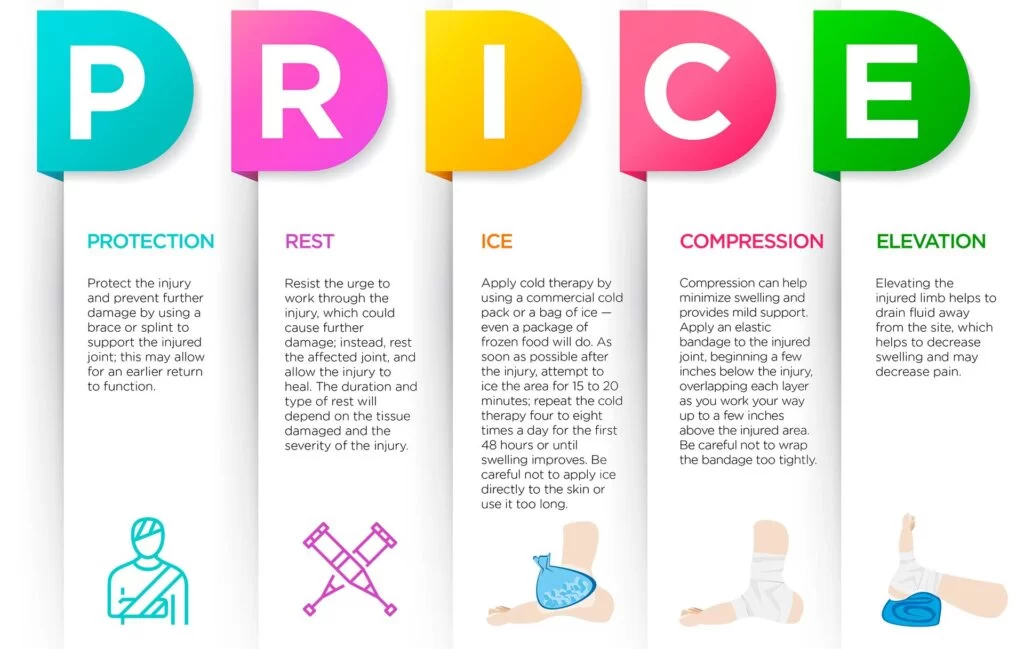
RICE protocol:
- It is the most basic first aid protocol for any acute sports-related injury.
- Is usually provided within the first 24-48 hours.
- This includes Rest, Icing, Compression, and Elevation.
- The term rest as the name suggests is to take a break. This not necessarily means complete sedentary or no activities but rather exception from doing activities that aggravate the pain.
- Icing is done to numb the pain and reduce the swelling. It is advisable to apply ice every 3-4 hours for 7-15 minutes in case of acute injury.
- Compression, as the name, suggests in applying bandages or wrapping tightly around the area of injury. It is done to reduce the swelling and inhibit the muscle.
- The last of this protocol is elevation. The affected area is kept slightly above its contra lateral part to ease the swelling.
Pain medication:
- In case of severe pain, over-the-counter drugs such as paracetamol salt n Aspirin, Ibuprofen, etc can be taken by the patient.
- In case of extreme pain, high-dose pain medication is prescribed such as NSAIDs usually.

Electrotherapy for adductor muscle pain:
- Electrotherapy modalities are used mainly for pain relief and to reduce spasms and swelling. As the rehabilitation proceeds, they are also used for muscle reeducation and to reduce tingling or any other neuromuscular symptoms.
- The most common modalities used for pain relief are deep heat, hot packs, and wax baths. Along with cryotherapy or contrast bath.
- Apart from them, IFT (Interferential Therapy), Transcutaneous electrical nerve stimulation (TENS), LASER, and Ultrasound are also used to reduce pain, alleviate the symptoms, and re-educate the muscles.
Reduce pain:
Apart from electro modalities, other advanced techniques are used nowadays by the therapist to speed up the healing process for the patient. This includes taping to inhibit the muscle action, thereby giving it adequate rest or other techniques like cupping, dry needling, etc to reduce the pain and release the spasm.
Improve motion.
The basic guideline for any rehab protocol is to start with normal range of motion exercise. This typically starts with active assistance in case of activity limitation to the full normal range. Now a day, in case of extremes of health or injury, the therapist focuses on redeveloping the functional range of motion, rather than the full range of motion.
Improve strength.
Once the normal or functional range of motion is achieved, the rehab then moves towards strength training. A few of the common easy-to-do-at-home strengthening exercises are mentioned in the follow-up sections. Along with strength training, proper stretching is also important to ensure that the muscle is not overused and is not injured or damaged further.
Promote a safe return to activities.
The physiotherapist does a timely reassessment in between the rehab to check when the patient can start doing the normal day-to-day activities and where they have reached terms with the goals planned. The therapist ensures that the patient doesn’t do too much in a single go and ensures a safe return for them for the activities. In certain situations, they might even ask the person to completely ban the activity temporarily to push them a little.
Adductor Stretching
There are varied ways to stretch the adductor muscles. A few of the most common ones are listed below.
- Adductor Lunge Stretch
- Butterfly Stretch
- Standing Adductor Stretch
- Kneeling adductor stretch
- Crossover stretch
- Lateral squat
- Squatting Groin Stretch
- Hip Opener and Groin Stretch
- Wide-Leg Side Bend
- Runner’s Lunge
Let us look into each of them in detail, along with the process to do them.
Adductor Lunge Stretch
How to perform the adductor lunge stretch?

- Get into a lunge position.
- Bend your torso forward to bring the outside of the shoulder towards the inner side of the forward knee.
- Then, lunge forward so the hips slide forward, up until a slight stretch is felt along the inside of the forwarded leg.
- Hold this stretch for 15-30 seconds and then slowly come back to the lunge position.
- Repeat 3-5 times with one leg and then shift to another side
- Change the sides alternatively to do both legs.
- It is advisable to keep the body and legs as relaxed as possible to feel the stretch.
Butterfly Stretch
This is one of the most common adductor stretches out there.
How to perform the butterfly stretch?

- Sit down on the ground in a long sitting position.
- Now bend the legs at the knee such that both feet are together as shown in the picture.
- If you can’t do it on your own, use your hands to guide the lower limbs.
- Now pull the joined feet towards the groin as much as you can.
- Hold both feet with your hands and place your elbows on the knees.
- While maintaining the back straight, allow your knees to fall towards the floor.
- You can give gentle pressure on the inner thigh by pressing slowly on the knees with the elbows.
- You should feel pulling and tension in your groin. Hold the butterfly stretch for 15 – 30 seconds.
- Release and repeat 3-5 times.
Standing Adductor Stretch
It is one of the easy adductor stretches to do and is most commonly preferred by sports persons.
How to perform the standing adductor stretch?
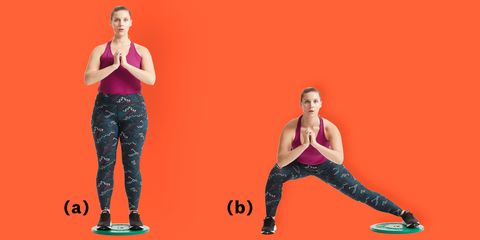
- This is also called lateral adductor stretch.
- To perform this, start off by standing with your feet around 3 feet apart.
- Transfer your weight to one side and bend your knee.
- Keep the other knee straight to feel a stretch on the inside of the thigh.
- Hold the stretch for 15-30 seconds.
- Relax and repeat on the other side.
Kneeling adductor stretch
How to perform the kneeling adductor stretch?
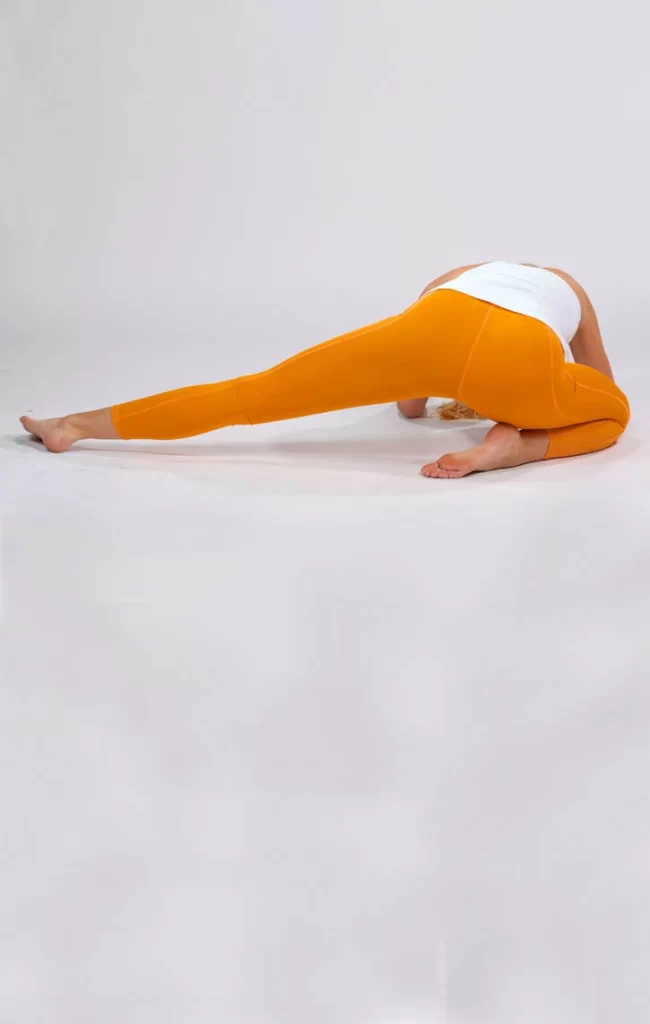
- Start with your knees and hands on the ground.
- Straighten out a left leg to the side. Try to keep the leg on the ground.
- Move your butt back to the heel of your bent right knee.
- You can feel the stretch on the inner thigh of your left leg.
- Hold for 15-30 seconds, and then return back to starting position.
- Repeat 3-5 times for each leg.
Squatting Groin Stretch
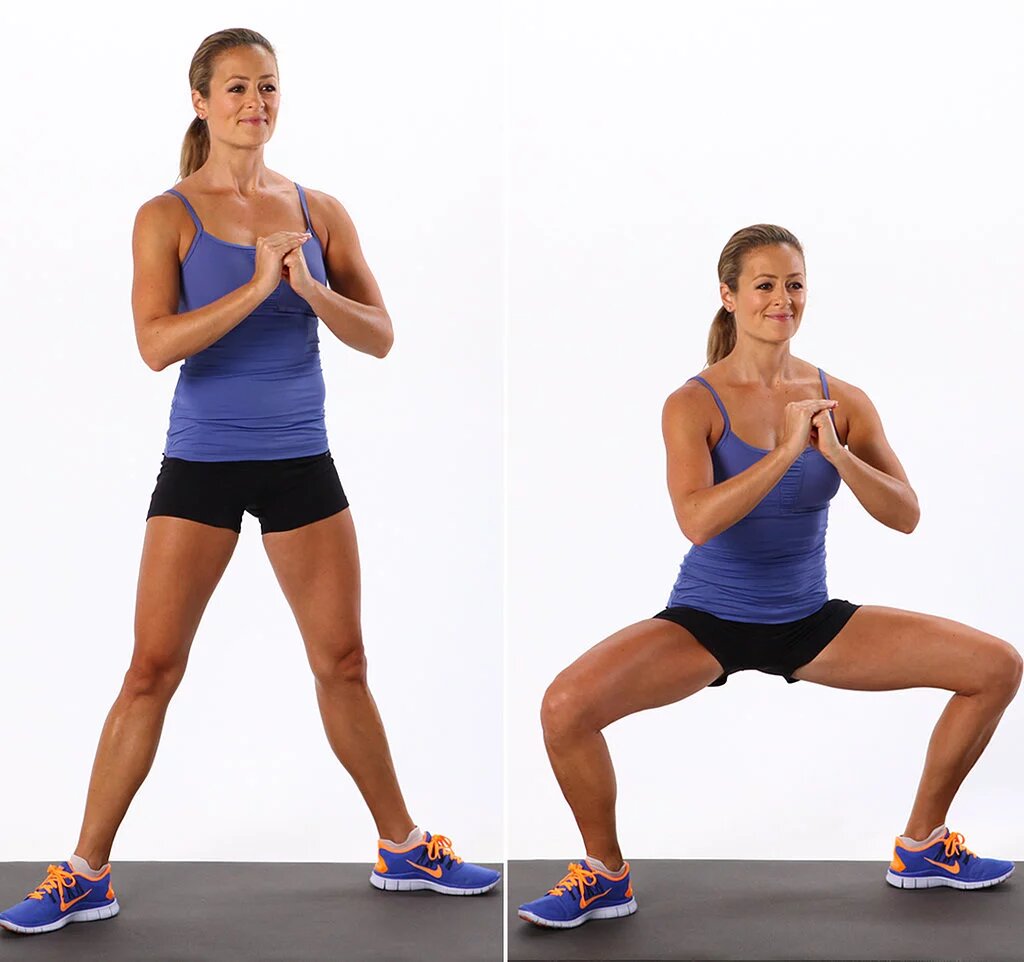
How to perform the squatting groin stretch?
- Stand with your feet wide apart with the toes pointing outwards, as shown in the picture.
- Slowly start squatting down until your knees are directly over the ankles, flexed to the 90-degrees. Make sure your knee joint is in line with the ankle joint and is not protruding forward.
- For a better stretch, you can put your hands on top of your inner thighs and gently push outward to open the hips.
- You will feel a stretch in the inner side of both legs.
- Hold for 20 – 30 seconds, relax and repeat 3-5 times.
Hip Opener and Groin Stretch
This is a great two-way stretch that not only stretches the adductors but also the stiff hip joints.
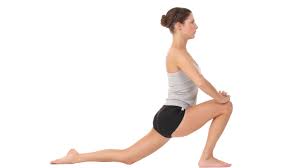
How to perform the hip opener and groin stretch?
- Start in a forward lunge position.
- Now gently drop one of your knees to the floor.
- Place the elbow on the same side as that of the dropped knee on the inside of your knee as pictured.
- Now gently move forward and twist your torso to the opposite side of that dropped knee until you feel a slight stretch on the lower back and the inner thigh.
- Hold the stretch for about 20 – 30 seconds, release, and repeat on the other leg.
- Perform this stretch on both sides 3-5 times.
- Take note not to perform this stretch in case of back pain with extension.
Long Sitting Adductor Stretch
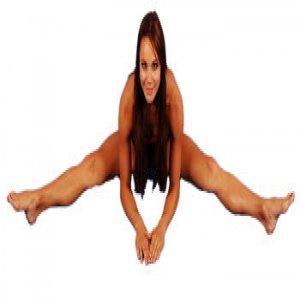
How to perform the long-sitting adductor stretch?
- Sit down on a mat on the floor or on the bed with a sturdy mattress.
- Outstretch the legs and pull them as far apart as possible. As shown in the diagram above.
- Move the right foot inward, pressing the sole to the inner portion of the thigh.
- Bend the upper body to the left as you reach the left hand to the left knee, calf, or foot.
- At the same time, either extend your right arm upwards, fingers pointed toward the roof, or bend the right elbow.
- Reach the right hand behind the head.
- Hold that pose for 10- 15 seconds and release.
- Then, switch sides.
Runner’s Lunge
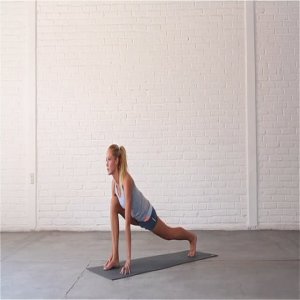
How to perform the runner lunge stretch?
- Get on all fours, facing the front of the mat.
- Plant your fingertips firmly into the floor as you extend your right leg behind you, maintaining the knee rested or lifted slightly.
- Press your right heel toward the back of the room.
- Bring your left foot forward so it is in line with your left hand.
- Maintain your head upwards.
- Breathe driving the hips further into the floor with each breath.
- Hold the position for 15-30 seconds or 5-10 seconds with 10-15 repetitions in a minute.
- Then, switch sides.
- Repeat on both sides 3-5 times.
Adductor Strengthening Exercise
There are a variety of positions and forms to strengthen the adductors. For ease, only those that can be easily performed at home are explained here.
Side-Lying Hip Adduction

How to perform side-lying hip abduction?
- This is an excellent exercise for the hip adductors that can be done on the floor while isolating a single leg at a time.
- All you need to do is to focus on contracting your hip adductor muscles to raise your leg off the floor.
- For this exercise, you have to lie down on any one of your sides, say the left side, and take your arms in front of you with your elbows and forearm on the floor for support, as shown in figure A.
- Then raise your right leg over your lower leg placing your heels against the thigh of your bottom leg.
- Keep your leg extended; raise it upward as much as possible.
- Please keep in ing that your legs should be in the same line while performing this exercise and that the knees should not be bent.
- Slowly return to the initial position.
- Do 10 to 25 repetitions on each side.
Note: You can add some challenges to your exercise by using a resistance band attached to an anchor or by strapping an ankle weight to your leg.
Cross Scissors
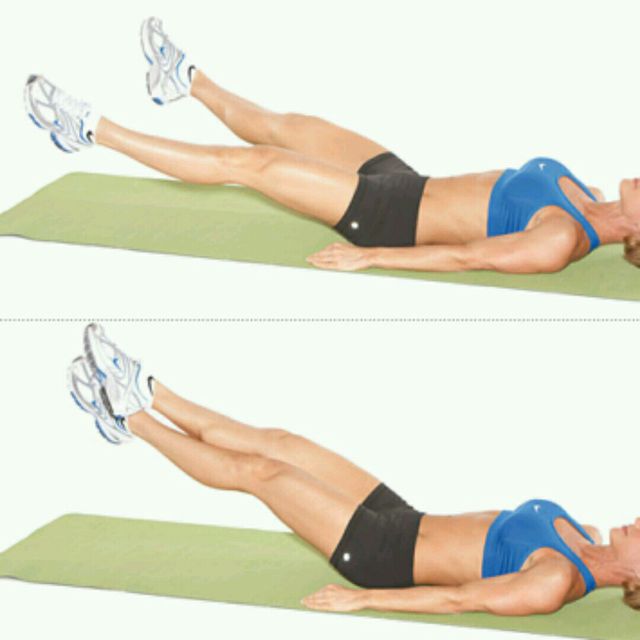
How to perform cross-scissors?
- This is an excellent exercise to work your hip adductor muscles and the core muscle simultaneously.
- Cross scissors are challenging as you need to stay in a crunched position throughout the movement.
- Maintain this position by crossing your legs in front of you requiring all your stabilizing muscles to be contracted.
- For this exercise, you have to Sit down and brace yourself by putting your hands on the ground back to you. Move your leg off the floor in front of you at a 30-degree to 40-degree angle with one leg crossed over the other.
- Your core muscle should be engaged throughout the movement in a semi-“V” position move your legs out to the sides then bring them back closed while crossing the other leg over.
- Does this with an Alternate leg until you complete 10 to 20 repetitions on each side?
Note: You can increase the difficulty of cross scissors by sitting in a “V” position without bracing your upper limb with your arms.
Clamshell

How to perform the clamshell?
- This exercise may look a little silly but is a great and easiest way to strengthen the hips. It can be a useful tool in detecting imbalances in the hips as well.
- For this exercise, you have to lie on either of your sides, say the left side, and take forearm support to your head like a pillow, as shown in the picture above.
- Stack your knees and hips flexed together up to 45 degrees. Your body should be in a neutral position and your head, neck, pelvis, and feet are in the same alignment.
- Your feet should be stacked and engage your core muscles and rotate your right knee upward and open by using your hip.
- Hold this position for 4 to 5 seconds and then return to the initial position.
- Do this movement 10 to 15 times on both legs.
Sitting hip abduction with resistance band
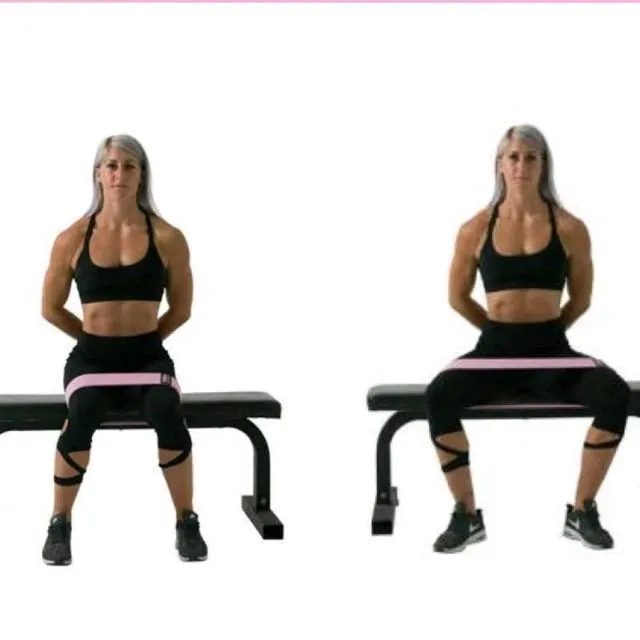
How to perform seated hip abduction with a resistance band?
- For this exercise, you have to sit on a chair or a stool, or a bench. Wrap a resistance band around your knees or above the knees, with your knees hip shoulder-width apart, as shown above.
- Smoothly move your knees outside against the resistance band and then bring them close to the body.
- Maintain an upright posture throughout the exercise.
- In case of back pain, use chairs with back support.
- Do 10 to 15 repetitions of 2 to 3 sets, on each leg. You can either do one leg and move on to the other side or do both alternatively.
Standing side Leg Raise
Note: Your core muscles should be engaged throughout the movement with your back straight, and chest up, and do not let your knees extend past your toes while squatting.

How to perform the standing leg raise?
- This is an excellent bodyweight exercise that can hit the hip adductors of one leg while hitting the hip abductors of the other leg as you will be using an isometric hold on your other leg to keep it in the air.
- For this exercise, you have to stand with a shoulder hip-width apart. Now on your left leg away from the body.
- Then Lift your right leg as far as comfortable, and hold it there for 4 to 6 seconds.
- Raise your left leg to your right leg until they touch then lower back to the initial position. Complete 10 to 18 repetitions of 2 to 3 sets.
- In case of balance issues, use walls or other props to keep in balance.
- Make sure that your back is straight while performing the exercise and is not extending backward.
Note: To make this exercise more challenging strap ankle weights to both legs.
Step Up with Leg Raise
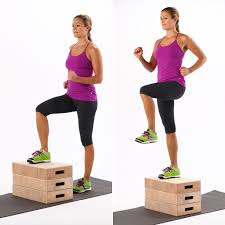
How to perform the step-up with leg raise?
- This exercise becomes a great source of activation for your hip adductors. The step-up action also adds a small number of cardiopulmonary workouts to your routine.
- For this exercise, you need a bench or a small platform that is at least 2 – 3 feet off the floor.
- However high you are comfortable stepping is fine, just make sure it is at least a little challenging.
- Step up with your left leg and then raise your body by driving through the left ankle. Put your right foot on the platform and then pull your right leg back.
- This will directly activate the adductors on your inner thigh.
- If you have not worked them out before, you could be quite sore after a few repetitions of these step-ups.
- Bring the right leg back in, then go back down to the initial position and repeat the action with the right foot leading.
- Repeat the same number of repetitions on both legs.
- It is ideal to start off with7-10 repetitions on each side.
Resistance Band Side Walks
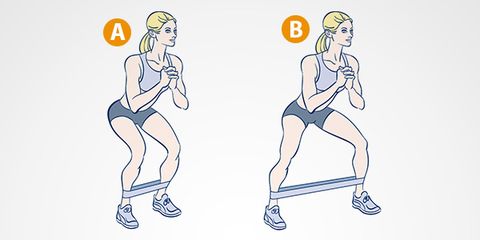
How to perform a resistance band sidewalk?
- This is an effective way to strengthen your hip muscles. You can initiate with body weight lateral steps.
- Wrap the resistance band just above your ankle joint, as shown in the diagram above.
- Stand with your feet under your hips and squat down into a semi-seated position. Your shoulders should be back and down and your gaze forward.
- Take a step out to the side, pushing with your heel against the band.
- Now step together again so your feet are once again hip-feet width apart.
- Focus on using the hips to drive the foot out and be sure to watch that your feet should be parallel. Your toe will tend to try to lead the move. Keep tension on the resistance band at all times.
- Continue stepping to the side for 8 to 13 steps.
- Return in the other direction for 8 to 10 steps.
- If you have limited space, you can also do these in a stable position. Just be aware to press your body out with your foot and not let your foot do all the in and out motion by itself.
- Make sure your feet and ankle are in the neutral position and they don’t move during the movement unnecessarily.
- It is advisable to do this exercise in front of a large mirror to be able to monitor yourselves better
Advanced: Begin with light resistance and work up to more resistance bands to improve strength.
Lateral lunge
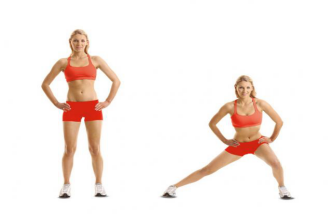
How to perform lateral lunge?
- For this exercise, you have to stand with your feet hip-width apart. Step out of your left leg and start by sending your hip back as you flex your left knee.
- You can reach your arms forward for counterbalance if you like. During the descent, your knee shouldn’t move more than two inches beyond your toes, and your knee should be aligned between 2 and 3 toes.
- The toe turns outwards slightly. Push-off through your left to return to an initial position.
- Repeat on your right side leg to complete the first repetitions.
- Do 3 to 4 sets of 8 to 10 repetitions on both legs.
Disclaimer
The information in this article is only for educational purposes. Please do not consider this as a substitute for medical advice in any way or form. In case of doubts, kindly contact the health care practitioner for further clarification.
The exercises mentioned are that fit for normal otherwise healthy individuals. It is always advised to connect with physiotherapists, fitness trainers, or sports therapists before starting any new exercise or regime. This is to make sure your body is ready for that particular exercise, would it be able to handle those loads, and biggest of all, are you performing this exercise correctly, is your posture good, and what other precautions should be taken which is unique to you only.
Similarly, while performing the stretches, make sure your body is relaxed as possible. You only want o stretch the muscle to the point of a slight pull. Caution must be taken to not overstretch the muscle as that decreases its integrity and strength.

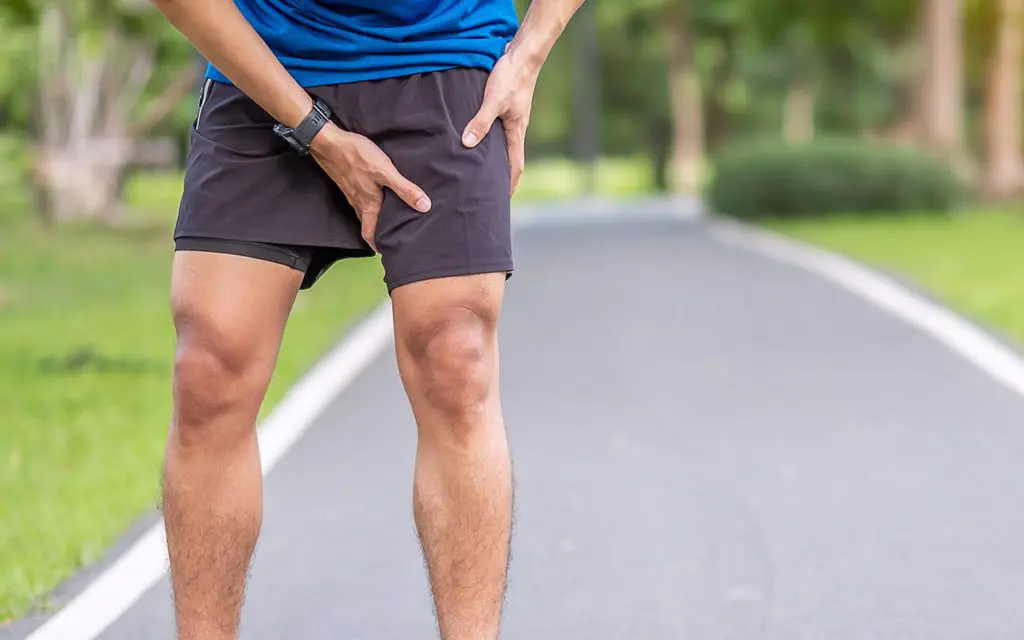
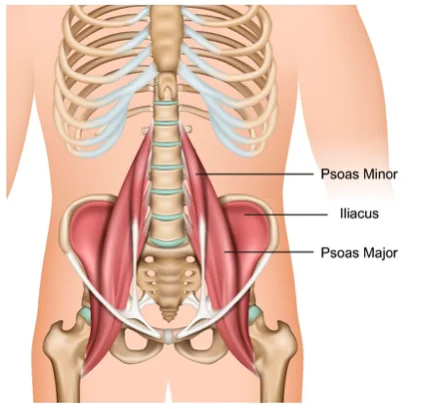
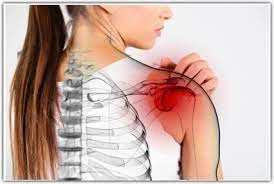
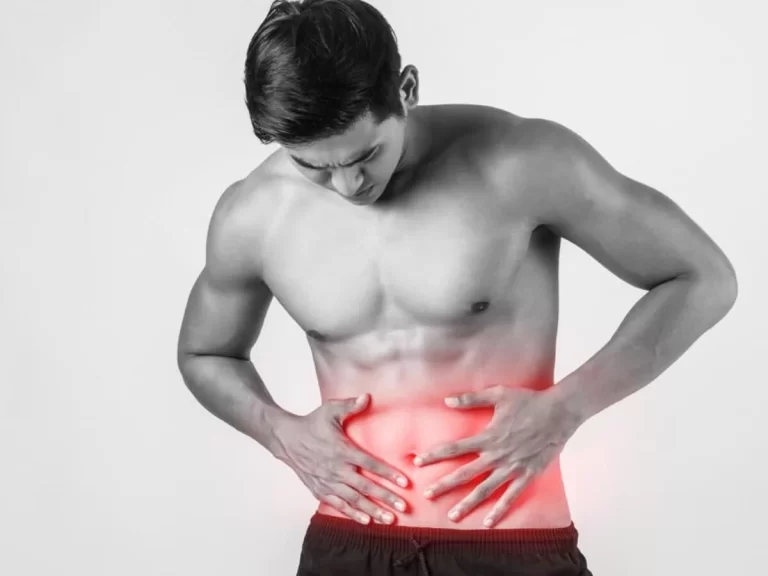
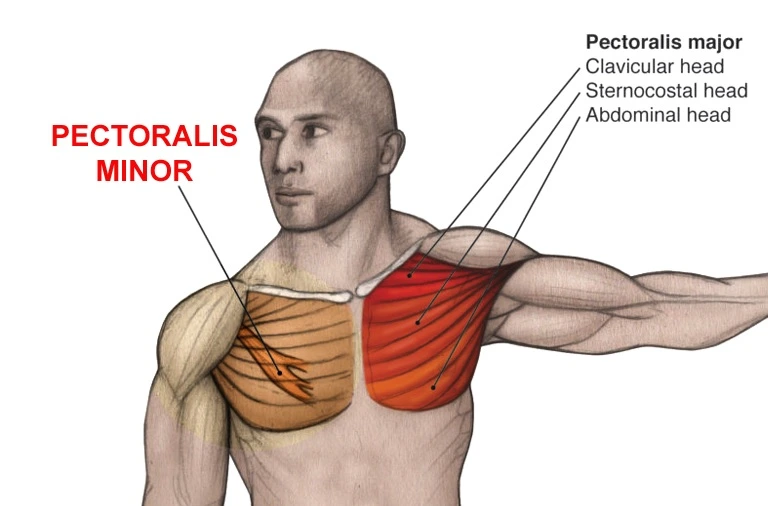
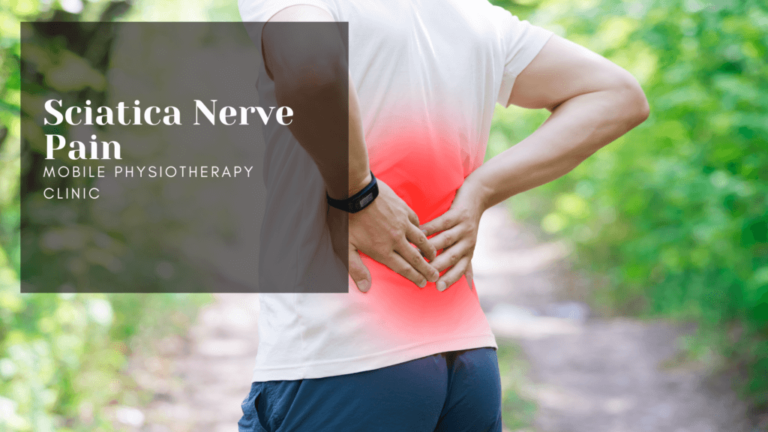
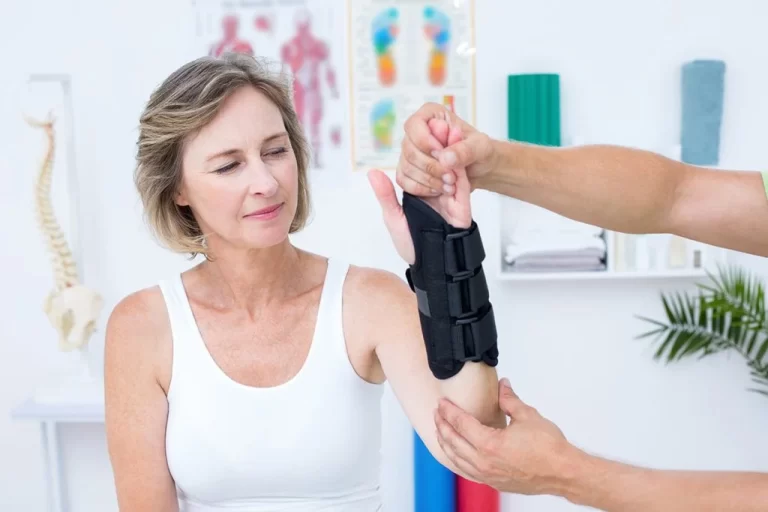
2 Comments